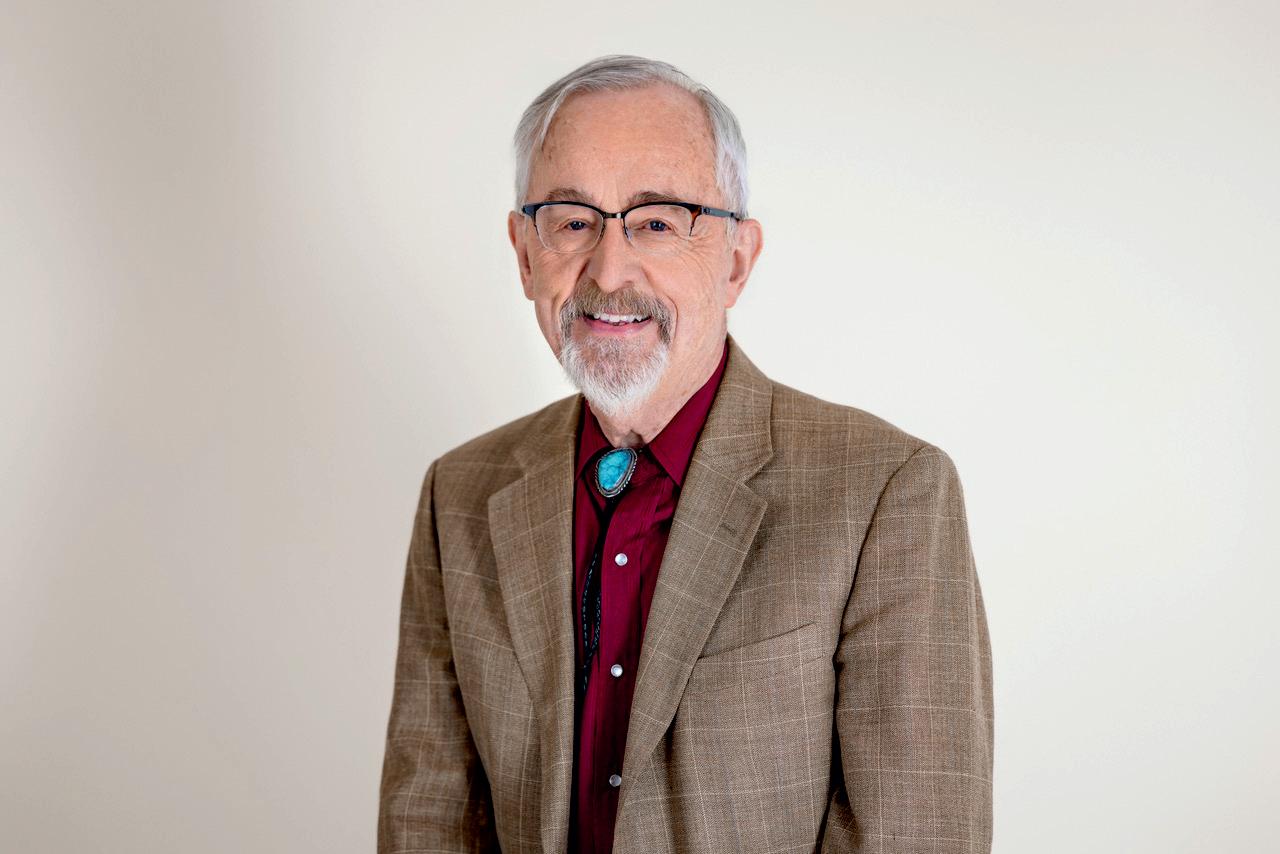













Educationhasalwaysbeenthecornerstoneof
progress.Butintoday’sinterconnected,rapidly evolvingworld,theroleofacademiahasgrownfar beyondclassrooms,lecturehalls,orpublishedjournals.It nowstandsatthefrontlinesofinnovation,policy,social change,andtechnologicaladvancement—redefiningnot justwhatweknow,buthowwethink,lead,andact.
Elite10:AcademicIconsRedefiningGlobalThoughtisa tributetothoseremarkableindividualswhoareshapingthe intellectualandethicalcontoursofourtime.Thesearenot merelyeducators—theyarevisionaries,catalysts,and reformers.Theychallengeconventions,raisebold questions,andchampioninclusive,future-ready frameworksthatimpactsocietiesonaglobalscale.
Thisfeaturedoesmorethancelebrateacademictitlesor accolades.Itrecognizesthoughtleaderswhoseinfluence travelsacrossbordersanddisciplines—thosewhodareto stepbeyondinstitutionalboundariestoengagewithrealworldchallenges.Theyarebridgingthegapbetweentheory andpractice,ensuringthatknowledgedoesn’tremain confinedtopapers,butbecomesaforceforequity, transformation,andsustainabledevelopment.
Eachoftheseteniconsrepresentsauniquevoiceinthe globalacademicdialogue—whetherthroughpioneering researchinscienceandtechnology,redefiningpedagogical models,influencingpublicpolicy,oramplifying underrepresentednarratives.Whatunitesthemisa profoundsenseofpurposeandanunrelentingcommitment toshapingabetter,moreinformedworld.
Inhonoringthem,wealsohonortheideathateducation,at itsbest,isnotstatic—itisaliving,evolvingforce.Onethat questionsthestatusquo,nurturescuriosity,andprepares generationsnotjusttosucceed,buttoleadwithconscience.
Thiseditionisdedicatedtothosewhobelieveinthequiet powerofknowledge—andtotheloud,lastingimpactitcan createwhenplacedinthehandsofthebrave,thecurious, andthecommitted.
Elite10isnotjustalist.It’salensintothemindsmoving theworldforward—onethought,onediscovery,one breakthroughatatime.

Managing Editor


Leadership at the Helm: Transforming Education from Within A R T I C L E S

Student-Centered Leadership: Empowering Learners Through Vision and Voice
Pooja M Bansal Editor-in-Chief
CONTENT
Deputy Editor Anish Miller
Managing Editor Prince Bolton

DESIGN
Visualizer Dave Bates
Art & Design Director Davis Mar�n
Associate Designer Jameson Carl
SALES
Senior Sales Manager Fa�ma A.
Manager- Media Partnerships Amira A
Customer Success Manager Nelson M. Sales Execu�ves Tim, Smith
TECHNICAL
Technical Head Peter Hayden
Technical Consultant Victor Collins
Research Analyst Eric Smith
SEO Execu�ve Alen Spencer
www facebook.com/ciolook/ www.x.com/ciolookmagazine
Email info@ciolook com
For Subscrip�on www.ciolookmedia.com CONTACTUSON
Copyright © 2025 CIOLOOK, All rights reserved. The content and images used in this magazine should not be reproduced or transmi�ed in any form or by any means, electronic, mechanical, photocopying, recording or otherwise, without prior permission from CIOLOOK. Reprint rights remain solely with CIOLOOK. FOLLOWUSON WE ARE ALSO AVAILABLE ON
Featured
Dr.ChristineJ.Walters President
DulceVasquez
AssistantVicePresident
JamieHagan
AdvancedSkillsTeacherAssociateSeniorLeader
JavauneAdams-Gaston President
Prof.RanaSobh ProfessorofMarketing andDeanoftheCollegeof BusinessandEconomics
RebeccaCarter GeneralDirectorStrategic EnrollmentManagement andStudentProgress
RichardCLarson Professor
SanaaKaddoura AssistantProfessorof ComputerScience
SerineBrahim ProjectManager
ZeenathRezaKhan FoundingPresident andBoardMember
TougalooCollege tougaloo.edu
ArizonaStateUniversity asu.edu
GEMSFoundersSchoolDubai gemsfoundersschool-dubai.com
NorfolkStateUniversity nsu.edu
QatarUniversity qu.edu.qa/sites
NazarbayevUniversity nu.edu.kz
MIT https://www.mit.edu
ZayedUniversity tougaloo.edu
EmiratesLiteratureFoundation elfdubai.org
ENAIWGCentrefor AcademicIntegrity uowdubai.ac.ae/academicintegrity/enai-wg-centreacademic-integrity
Dr.Christinebringsablendedsetofskillsandover24years ofleadershipincurriculumandpolicydevelopment, fundraising,studentenrollmentandretentionmanagement, teambuilding,conflictresolution,strategicplanning,and organizationalmanagement.
Dulceisemergingasaformidableforceineducation advocacy,civicengagementandleadership
Jamiebringsextensiveexperienceandexpertisetothe classroom,providingsupport,guidance,andtrainingto fellowteacherstoenhanceteachingpracticeandstudent outcomes.
JavauneAdams-GastonistheseventhPresidentofNorfolk StateUniversity.
Prof.RanaSobhisaninspirationforpurpose-driven excellenceandresilienceinthelandscapeofhighereducation leadership.
RebeccaCarterisanaccomplishededucationleaderwitha strongbackgroundinstrategicenrollmentmanagementand studentprogress.
Prof.Larson’sworkhasinfluencedreal-world applicationsacrosspublicinfrastructure,emergency response,urbanplanning,andtechnologypolicy
DrSanaaKaddouraholdsaPhDincomputerscience fromBeirutArabUniversity,Lebanon.Sheiscurrently employedasanAssistantProfessorofComputerScience atZayedUniversity,UnitedArabEmirates.
Serineoverseestheplanning,execution,anddeliveryof projects,workingcloselywithcross-functionalteamsto achieveprojectobjectivesandmeetstakeholderexpectations.
Zeenathisonesuchleaderwhoisadistinguished academicianwithamultifacetedroleinacademia.
Reimagined Service, Science, and Education Through Human-Centered Innovation




Larson’s journey began far from the halls of MIT—in rural Pennsylvania, where independence, curiosity, and a love for the natural world shaped his foundational years.
In a world where systems are becoming increasingly complex,ProfessorRichardC.Larsonstandsoutasa figure of rare clarity, purpose, and innovation Universally known as “Doctor Queue,” Larson’s influence spans the domains of operations research, education, and service systems.With a unique blend of analytical rigor and human-centeredinsight,hehasnotonlyadvancedacademic thought but also designed real-world solutions that affect millions. His legacy is a living one interwoven with innovation,mentorship,andimpact.
Larson’s journey began far from the halls of MIT—in rural Pennsylvania, where independence, curiosity, and a love for the natural world shaped his foundational years What followedwasanextraordinaryascentfromahesitantstudent to a globally recognized scholar whose ideas have redefined waitingsystems,emergencyresponsestrategies,educational outreach, and much more. Through both scholarship and service,Larsonhastranslatedacademictheoryintotoolsthat solvepressingglobalchallenges.
This exploration of Larson’s contributions—shaped by his reflections—traces his evolution from a curious child to a master of systems thinking and human-centered design. His story is not just one of personal triumph but a call to possibilityforanyoneinterestedinharnessingknowledgeto improvelives.
Larson’slifebeganinBayside,Queens,in1943,buthismost formative years were shaped in the quiet town of Sunbury, Pennsylvania. Here, amidst the countryside, his sense of autonomyandcuriositybegantoflourish.Apivotalmoment arrived when, at the age of five, his parents offered him a choice—tobeginkindergartenortodelayschoolforanother year Hechosethelatter,optingtolearnfromnatureandplay, unconsciouslyembracingafoundationalprincipleoflifelong learning: that experience and reflection are equally valid teachers.
This choice, though seemingly simple, was emblematic of a themethatwouldrecurthroughoutLarson’slife—thepower of agency and exploration Although he lagged behind academicallywhenhefinallybeganformalschooling,Larson soon caught up, driven by a natural determination and resilience.These qualities became signature attributes of his career, enabling him to tackle abstract challenges and navigateunchartedintellectualterrain.
Larson’s secondary education took place in Needham, Massachusetts, where he enrolled in one of the first PSSE physics courses developed during the post-Sputnik push for scientific excellence in the U S This math-integrated approach to science education resonated deeply with him, sparkingalifelongloveforresearchandinquiry.Thecourse notonlygroundedhiminfundamentalscientificconceptsbut also taught him how to think systematically—skills that would become central to his academic and professional identity
MIT emerged as a dream destination for Larson—a place wherehehopedtopursuehisburgeoningpassionforscience, though he considered it a “stretch” school. To his astonishment, he was admitted. Arriving on campus, he initially struggled with imposter syndrome, surrounded by peers from around the world whose talents appeared overwhelming But Larson gradually found his footing, buoyed by a culture that prized collaboration, intensity, and intellectualrigor
AtMIT,LarsonchosetomajorinElectricalEngineering,also known as Course 6. This decision was informed by both
familyhistory—hisfatherwasanelectricalengineer—andby a desire to learn how to apply systematic and quantitative reasoning to real-world problems The department’s emphasisonproblem-solvingequippedhimwithatoolkitthat transcended disciplines and became crucial to his interdisciplinaryworkinoperationsresearch.
Larson’s acceptance into MIT’s graduate program came by wayofafellowshipfromBellLabs.Althoughhehadinitially intended to pursue only a master’s degree, persistent encouragement from faculty and peers convinced him to attemptthePh.D.qualifyingexams.Hepassedandembarked on a doctoral journey that would launch his reputation as an innovatorinappliedresearch.
TheDetectiveTurn:PolicingasaResearchFrontier
During his graduate studies, Larson became intrigued by police investigation methods after a theft occurred in his dormitory What began as a personal curiosity soon transformed into scholarly pursuit. He borrowed armfuls of detectivenovelsfromthelibrary,whichcaughttheattention ofhisadvisor,ProfessorAlDrake.Drakeencouragedhimto formalize this interest into academic research, leading to Larson’s master’s thesis, doctoral dissertation, and his first publishedbook,UrbanPolicePatrolAnalysis.
Larson’s teaching style emphasized experimentation, respect, and active engagement. From massive lecture halls of 350 students to intimate freshman seminars, he adapted his methods to suit different environments.





This research attracted national attention and led to his appointment as the youngest member of the Science and TechnologyTaskForceofthePresident’sCrimeCommission. Through this work, Larson began building the bridges betweentheoreticalresearchandpracticalimpactthatwould definemuchofhiscareer
Joining the MIT faculty brought its own challenges and rewards. Initially daunted by the prestige of his colleagues, Larsonslowlybuiltconfidencethroughteachingandsecuring researchfunding.Hishumilityandsenseofhumor—heoften referencedGrouchoMarx’squipaboutnotwantingtobelong toanyclubthatwouldhavehimasamember—endearedhim tostudentsandcolleaguesalike.
Larson’steachingstyleemphasizedexperimentation,respect, and active engagement. From massive lecture halls of 350 students to intimate freshman seminars, he adapted his methods to suit different environments. His philosophy was simple yet powerful: challenge students, respect their intelligence,andtheywillalwayssurpassexpectations.Many of his former students now lead academic departments and researchcentersaroundtheworld.
Richard’s leadership helped in launching the Learning International Networks Consortium (LINC), which brought together educators from diverse cultures to share solutions for improving educational systems.
Larsonchampionedoperationsresearch(OR)asadiscipline critical to real-world decision-making. Often misunderstood asamedicalfield,ORactuallyaddressescomplexsystemsin industries such as transportation, healthcare, and public safety. Larson called it “the physics of the real world that includespeopleandtechnology.”
Hisgroundbreakingworkonoptimizingemergencyservices revolutionizedurbanplanning.Frommodelingpolicepatrols tosimulatingemergencyroomwaittimes,hisresearchhelped municipalities allocate resources more effectively He also extended OR into less traditional domains such as dynamic pricing,publichealthlogistics,anddisasterresponsesystems.
Larson earned the nickname “Doctor Queue” through his groundbreaking contributions to queueing theory He inventedtheQueueInferenceEngine,amethodforderiving queueing data from incomplete or sparse information. This innovation proved vital in sectors from telecommunications tohospitalmanagement.
Morethanjustanumbersproblem,Larsonviewedqueueing as a human experience He incorporated insights from psychology to explore how perceptions of fairness, transparency,andcommunicationaffectpeople'stoleranceof waiting. His work has been applied in hospitals, amusement parks,andretailsettingstoimprovecustomersatisfactionand systemefficiency.
Larson’s vision extended beyond academia into global education As director of MIT’s Center for Advanced Educational Services, he explored how digital tools could expand learning access. His leadership helped in launching the Learning International Networks Consortium (LINC), which brought together educators from diverse cultures to sharesolutionsforimprovingeducationalsystems.
The BLOSSOMS project, another of Larson’s pioneering initiatives, created interactive, inquiry-based science and math videos for high school classrooms worldwide. By blending online instruction with in-person teaching, BLOSSOMSofferedascalablemodelofblendededucation, especiallyvaluableinresource-limitedenvironments.
Throughouthiscareer,Larsonplayedapivotalroleinshaping theresearchagendaatMITandbeyond.Asco-directorofthe Operations Research Center and director of CAES, he mentored emerging scholars and created platforms for interdisciplinary research. His professional leadership extendedtopresidenciesatORSAandINFORMS,twoofthe mostprestigiousbodiesinthefieldofoperationsresearch.
He received numerous honors, including the Frederick W Lanchester Prize, the Kimball Medal, and election to the National Academy of Engineering. In 2025, he received a Lifetime Achievement Award from the International AssociationofTopProfessionals(IAOTP),atestamenttohis decadesofmeaningfulimpact.
Larson’smostenduringlegacymaybehisunshakablebelief in the power of empathy, curiosity, and service. While he possessed the technical mastery of a brilliant engineer and mathematician, it was his human-centered approach that set him apart. He approached every problem—from hospital queuestoglobaleducation—notjustasapuzzletobesolved, butasanopportunitytoimprovelives.
He has always placed students at the heart of his mission, viewing mentorship as both a privilege and a responsibility Many of his mentees now lead their own research teams, continuing the cycle of inquiry, innovation, and compassion thathemodeledsowell.

Larson’sstoryisnotoneofisolatedacademicsuccessbutof integrated, impactful living. He has spent his life building bridges between disciplines, between theory and application,andbetweenpeopleandsolutions.Fromthequiet woodsofPennsylvaniatotheglobalstageofacademia,hehas neverlostsightofthehumansideofscience.
His legacy continues to evolve through the lives he has touched,theinstitutionshehastransformed,andthequestions he has inspired others to ask. Larson remains not just a professor or a researcher, but a true architect of possibility —someone who reimagines what’s possible when intellect andempathymeet.







Education is usually conceived in curriculum, technology, facilities, and policy—but the secret to all transformation is one common denominator: leadership. Not title leadership, but leadership in thinking, vision, and the capacity to generate change from the inside out. As the world's education systems struggle with issues from equity and access through to innovation and inclusion, onethinghasbeenproven—transformationbeginsatthetop, andfromwithin.
Education leaders no longer are merely asked to administer schools.Theymustinspiregrowth,createculturesofongoing improvement, and model values that make up not just classrooms, but societies. Leadership today is not about directing from the top It's about leading from the helm steering complexity, building trust, and enabling otherstoleadwithpurpose.
VisionwithPurpose:TheNorthStarofReform
At the heart of transformational educational leadership is a strongandclearvision.Thoseleadersinitiatingconsequential changearenotjustrespondingtotestscoresormandatesbut aredrivenbyanintimateunderstandingofwhateducationhas to do: educate curious, able, caring human beings for an uncertainworld.
Vision gives guidance when there is no certainty. It makes school districts and systems stay on track when confronted with conflicting demands or changing policies.Above all, a great vision is infectious it inspires teachers, inspires students, comforts parents, and encourages collaboration amongcommunities.
But vision alone is aspiration without power. Successful leaders base their vision in strategy. They turn ideals into realities using concrete goals, alignment of resources, and measurable outcomes They do not wait for things to improve—theyimprovethings.


Themostinfluentialleveraschoolleaderhasistheircapacity to influence culture. School culture, in turn, affects teacher moraleandstudentbehavior,aswellasinnovationandequity Transformational leaders recognize this and design on purposeforspaceswheretrust,creativity,andinclusiongrow
This starts with modeling good behavior. Active listening leaders who communicate openly and respect all parties of interest create the tone for an open culture and shared accountability They foster reflective practice, construct professionallearning,andrecognizeeffortandprogress.
Strong culture also facilitates resilience Under stressed systems by budget, by social disorder, or by global pandemic—it's culture that keeps humans active. Leaders whoconstructculturesofbelongingandsharedpurposefind their institutions operationally sound but emotionally and morallycentered.
Educationalreformisnotsomethingatthetop.Realchangeis spreadamongstaffgroups,anditsucceedswhenteachersare leaders themselves. Outstanding educational leaders understand that lasting impact occurs through developing leadershipcapacityateverylevel.
This is investment in staff development that extends beyond compliancetoinnovation.Itisbuildingleadershipthreadsfor teachers, inspiring collaboration and self-direction where appropriate.Leaderswhobelievetheirteachersasinnovators develop powerful learning environments that are more responsive,adaptive,andinclusive.
Empoweredteachersbecomemodelsforstudents,too.When teachers feel supported, valued, and trusted, they are more likely to build engaging, just learning environments. Leadership is thus a ripple effect beginning with administratorsandradiatingtoclassroomsandcommunities.
In a world full of information, school leaders need to learn how to utilize evidence to make decisions without forgettingthehumanfactor.Dataareneededtotargetareasof need,todistributeresources,andtomonitorprogress,butthey need to be weighed against empathy, context, and a subtle understandingofwhatlearningreallylookslike.
Transformative leaders don't use data as control—use it as understanding.Askmorecriticalquestions:Whatstorydoes the data tell? Whose voices aren't included? What does this mean for our students' living lives?This way, decisions will always be student-driven, just, and grounded in the real dynamicsoftheschoolcommunity
Inthisplace,achievementisnotonlyquantifiedbyscholastic achievement but by more general metrics: teachers' morale, community involvement, children's well-being, and lifetime learning.
Education leadership no longer just demands technical competence but also courage, flexibility, and integrity. The globe is evolving at a breakneck speed, and with it, the expectationsofeducation.FromembeddingAIintoteaching to dealing with issues of mental health and removing structuraldisparities,leadershavetofindtheirwaythroughan intricatewebofexpectationsandrealities.
The leaders will need to make difficult choices, question entrenched assumptions, and make the case for structural change—evenwhendifficultorunpopular.Buttheymustdoit humbly—listening, learning, and growing with the people theyareworkingwith.
Fearless leaders don't put themselves in the hero role. They are stewards—guiding their institutions through change and makingsureeveryvoiceisheardandeverylearnerisnoticed.
Redesigning education isn't a matter of showy moves—it's about deliberate, long-term leadership that starts inside out. It'saboutleaderswhorealizethatvisionmustbesupportedby action,thatcultureistherealchangeagent,andthattrustisthe foundationuponwhichallchangeisbuilt.
As we reimagine what education can and should be in the decades ahead, it will be those leaders—quietly resolute, courageousbutgentle,strategicbutprofoundlyhuman—who design the future. Because educational leadership at its best isn'tleadershipofsystems.It'sleadershipoflives.






Inthisdayandageofschooling,thereisoneideathathas emerged as unavoidable and cutting-edge at once: student-centered leadership. It's not a philosophy but a leadership approach which re-defines students as stakeholdersratherthanpassiverecipientsofinformation.In a space dominated usually by information, policy, and tradition, student-centered leadership is a cutting-edge declaration—thestudent is the purpose of education, and all mustbedeterminedaroundhim/her
Thiskindofleadershipcallsformorethangoodgovernance. Itcallsforvisionthatlistensforstudentdevelopmentandthe courage to hear student voice as a centering principle in the formationofschoolmission,pedagogy,andculture.Itisnot about leading from atop but with students, with clarity, compassion,andcouragetoseeeducationfromtheireyes.
AVisionRootedinPossibility
Visionisleadership.Instudent-centeredsystems,suchvision isnotadministrativeorabstract—it'sinclusive,personal,and aspirational. Leaders have to ask themselves: What do we know about students?What are we building for them as our future?Andhowdoeseverymomentineveryclassroomserve thatfuture?
Student-ledleadersthinkthatanystudentwillbeincredibleif theyareplacedintherightcontext.Theyimagineoneormore of greater equity than compliance, greater growth than conformity, and greater human flourishing than measures of standardization. It acknowledges that each student arrives withanassemblageofstrengths,challenges,andpossibilities uniquetothem—andthatleadershipmustflextomeetthose needsratherthanviceversa.

Ittakesonlyafirststeptoplacesuchavisionintolanguage. Student-centered leaders must thread it throughout all: staffingandbudgeting,schooldesign,curriculumdesignand professionaldevelopment.Theymustrestoremechanismsfor people-centered goals, not merely test success but agency, engagement,wellness,andrelevance.
Student-ledleadershipinthetruesenseleavesspacefortrue student voice—not as an add-on, but as a starting place for buildinginstitutions.Studentvoiceisnotinput;it'sinsight.It gives a live-in-the-moment window into the learner experience and enables leaders to create more responsive, inclusive,andempoweringlearningspaces.
When students sense they have a voice regarding norms, decisions, and feedback loops in school, they are more invested in school. Leaders who pay attention to the hopes, fears,andlivedexperienceofstudentsarebetterpositionedto constructschoolsinwhichsenseofbelongingandmotivation aremorelikelytobecomedeepandlasting.
Thistakestrusttoo.Student-centeredleadershavetobeable to share power to share students not just voice, but leadership.Itcanbeseveralthings:studentadvisorycouncils, co-planning of curriculum, or student-led initiatives for the entireschool.Whenstudentvoiceisstructural,notsymbolic, leadershipbecomesmoredemocratic—andlearningbecomes morerelevant.
Student-led leadership does not shirk responsibility it reshapes it. Rather than defining success as test scores or checklist compliance, this model tries to define success in termsofstudentgrowth.Itasks,withmoreurgency,howwell schools prepare students not just for academic achievement, but for emotional toughness, moral integrity, and preparednessforthefuture.
Thisisnotpaternalistic,butempathetic,leadership.Thisdoes not define students as problems to solve, but as partners to serve. Student-centered empathetic leaders recognize that trauma, culture, identity, and context significantly inform learning. They recognize that effective policies have the potential to exclude or marginalize unless from the student pointofview
But compassion and leniency are not identical to each other—they are identical to each other as open, empathetic leaders. High expectations of students with the support, resources, and tools to meet those expectations are what
conscientious achieving, student-focused leaders insist on. Theyinsistonrigor—butwillrejectthenotionthatrigorand compassionaremutuallyexclusive.
Student leadership is also motivating the proximal communityofcloseststudents:teachers.Thegreatestagents of achieved student voice and vision are those very same teachers.Buttheyhavetobeprovidedwithtime,growth,and trustaswellinordertocomprehendlearningandco-construct spacesthataugmentagency.
Leadershipneedstodevelopschoolcommunitieswithalove ofinnovation,andwithmasterteacherdesigners,notmerely content presenters Professional growth, evaluation, and school policy needs to be driven by the ultimate outcome: enabling teachers to serve and empower students more effectively.
In addition, student-led leaders exemplify behavior They reflectonthemselves,exposethemselvestostudentandother input, and humble leadership. By doing so, they create schools that are not only effective, but rich learning communities.
Whenlearningisundersiegefromtechnology,inequity,and changing global appetites, student-centered leadership is a beacon and a prophetic voice. It does not abandon systems, butitwillnotallowsystemstobecomelargerthanthelearner Itaffirmsstandards,butnotattheexpenseofinquiry,utility, andpassion.
Withvision-inspiringandamplifiedstudentvoice,leaderscan flipeducationonitshead.Theycanconstructschoolswhere learningisrelevant,leadershipisdistributed,andallthekids areinvestedinthefuture.
Student-ledleadershipisnotastrategy—it'sacommitmentto leadwithheart,withcourage,andwithpurpose.It'sacallfor leaderstogobeyondseeingstudentsasend-usersofasystem, andratherasco-creatorsofthelearningenvironment.
Whenstudentshavevisionandvoice,educationisnolonger business as usual it's revolutionary. And when leaders follow student-led, they don't simply improve the quality of schools—theyredefinewhat'spossible.





















































